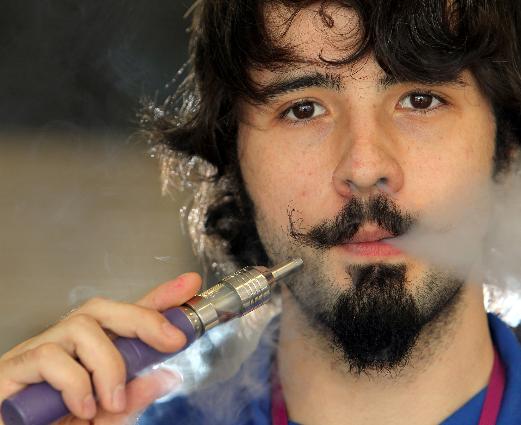Teens and young adults confronted by more TV ads for e-cigarettes
By: Karen Kaplan, LA Times
Commercials for electronic cigarettes have become so ubiquitous that millions of American teens have seen them since 2012, a new study says.
About 4 out of 5 of the TV ads seen by these young viewers were for blu eCigs, a brand that was purchased by tobacco giant Lorillard Inc. in April 2012. Though the ads are ostensibly aimed at adults, they employ language that makes e-cigarettes seem desirable to teens, researchers write in a study published Monday by the journal Pediatrics.
Electronic cigarettes are battery-powered devices that allow users to inhale nicotine vapor. The devices have generated billions of dollars in sales but remain extremely controversial. Advocates for e-cigarettes like that the vapor contains fewer toxins than the smoke from traditional cigarettes, and some studies suggest they can help smokers kick the habit. But public health advocates contend that e-cigarettes get young people hooked on nicotine, increasing the risk that they will become regular smokers. The devices also undermine efforts to make smoking seem taboo and may make it harder for smokers to quit by keeping them hooked on nicotine, they say.
Though the U.S. Food and Drug Administration has announced its intention to prohibit sales of e-cigarettes to minors, the agency has not taken steps to limit advertising aimed at kids. The authors of the new report wanted to quantify how often teens and young adults saw e-cigarette ads on TV.
To do, so they turned to data from Nielsen, the company that keeps track of what Americans are watching. The data reported in the study was in the form of “target rating points,” or TRPS, a measurement that combines the proportion of viewers exposed to an ad and the number of times it may be seen.
The researchers found that nationally televised e-cigarette commercials were not particularly common through the first half of 2012. But in the second half of 2012 and the first nine months of 2013 – the period after Lorillard entered the industry – such advertising increased dramatically.
Between 2011 and 2013, the TRPs for viewers between the ages of 12 and 17 rose by 256%, according to the study. In the year that ended Sept. 30, 2013, those TRPs were high enough that 80% of teens could have seen 13 e-cigarette commercials, on average. Those TRPs also could work out to half of all teens viewing an average of 21 e-cigarette ads over the course of a year, or 10% of viewers watching an average of 105 commercials over a year.
The researchers also calculated the exposure for young adults between the ages of 18 and 24 and found that it increased by 321% between 2011 and 2013. The TRPs for this group were high enough to allow half of these young adults to see 35 e-cigarette commercials, on average, over the course of a year.
About 75% of these commercials aired on cable TV channels, including AMC (which aired 8% of them), Country Music Television (6.1%), Comedy Central (5.9%), WGN America (5.4%) TV Land and VH1 (both 5.3%), the study authors found. The commercials also ran during network shows that are popular among teens, including “The Bachelor,” “Big Brother” and “Survivor,” according to the study.
Among the nationally televised ads seen by teens, 82% were for blu eCigs, the data show. For young adult viewers, ads for blu eCigs accounted for 80% of the total.
The researchers also reported that 19 e-cigarette makers aired commercials in some local markets between 2011 and 2013. These ads aired in groups of cities that were home to as many as 40% of American teens.
The study authors expressed great concern over Lorillard’s ad campaign for blu eCigs. They noted that other studies have found a strong correlation between smoking in movies and the number of teens and young adults who pick up the habit. They also wrote that the ads were running at much higher frequency than the levels needed for anti-tobacco ads to influence teens that smoking is harmful.
The most widely aired blu eCig commercials featured actor Stephen Dorff. In one, he is seen smoking in restaurants, a taxi, a subway, at a rock concert, on a hike and even while riding his bike. In another, he ticks off the benefits of e-cigarettes versus traditional cigarettes and winds up by saying, “We’re all adults here. It’s time we take our freedom back.”
That kind of explicit reference to e-cigarettes being an adult product may seem like a responsible move by Lorillard, but it also serves to make the devices more appealing to teens, the study authors wrote.
The study was conducted by researchers at RTI International in North Carolina’s Research Triangle Park and a colleague at the Florida Department of Health in Tallahassee. Funding was provided by the state’s Tobacco Free Florida program.


